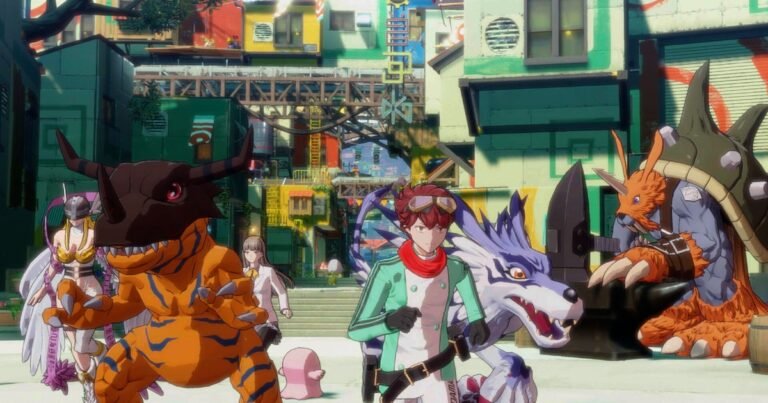
Master Detective Archives: Rain Code
Master Detective Archives: Rain Code faces the challenge of living up to the legacy of the Danganronpa series. Collaborative effort with Tookyo Games helps create a dark fantasy aesthetic, filled with shadows and neon lights, where criminals roam and deep atrocities are committed.
Plot Twists and Characters
The slow pace of the narrative, the abundance of plot twists, and the eccentric characters create a typical mystery and crime-solving game atmosphere. Protagonists like Yuma Kokohead and Shinigami go through different phases, adding complexity to the story.
Kanai Ward and Investigations
Set in the city of Kanai Ward, the game follows a group of detectives trying to solve mysteries and end the continuous rain. The exploration of the city, the completion of chapters, and the improvement of the protagonist’s skills through side missions provide an engaging gameplay experience.
Yuma and Shinigami are not alone throughout the campaign. They solve most of the mysteries together, relating to each other as two distinct beings. Yuma is somewhat naive but perspicacious, while Shinigami is humorous and always willing to give clues and improve the young detective’s situation. However, both end up getting involved with other detectives from the world organization, reaping many benefits in terms of examining evidence, through powers and special abilities, the so-called strengths. The contribution of these powers is not always available, depending on a series of circumstances and the moment of the case. Finding signs of life within a radius of 50 meters or adopting a hologram form capable of passing through walls unnoticed are some of the skills used by other detectives and that Yuma and Shinigami themselves can access to solve the mysteries. There is a wide variety of powers and their use in specific crime investigation contexts is effective.
The biggest change occurs when at a certain point in the investigation, there is a transition from the real world to the so-called mysterious labyrinth. In addition to transforming Shinigami into a beauty, the somewhat dreamlike environment seems to take shapes and adjustments to the stages of solving the mystery. These stages are as interesting in their mechanics, with some agility, as they are simple. The descent into the labyrinth implies a pause in real-world time. However, Yuma and Shinigami continue to converse and try to extract observations and evidence, many of which have already been addressed in the real world. It is impossible not to look at this segment without seeing an exaggeration of the same notes and comments taken throughout the investigation, in addition to the final summary, a kind of recap of the material covered.
The addition of quick time events, choosing paths, or quick actions against the opponent and suspect of the crime surprises at times, creating an apparent idea of diversity of mechanics. But often, their simplicity and constant recreation do not negate an unnecessary repetition and forced prolongation of the mystery. In a kind of one-on-one through sentences in a Death Match in the ring, a somewhat punk and metal approach to the suspects, they are confronted with key solutions, countering a correct argument with a sword strike. Here, the suspects’ arguments gain “gravitas” and even inflict damage on Yuma if he does not dodge in time. The difficulty often lies in choosing the correct solution for the argument that can be contradicted. Without success, the opponent relaunches the arguments. Eventually, the solution will be discovered, even if it is by trial and error.
Among the most bizarre and unusual puzzles is one in which Shinigami is transported inside a moving barrel, with letters to hit forming the answer to the question. There is a time limit that decreases whenever a wrong letter is struck. Another bizarre situation occurs when Shinigami cuts Yuma’s neck and the blood projected on the wall reveals a question about which path to take. These mechanics and puzzles offer some diversity but soon enter a kind of recycling and adaptation to the mystery and suspect, beyond a too forced extension. There are mysteries that last too long, lost in too many conversation sequences that address already considered clues, in addition to the final summary.



